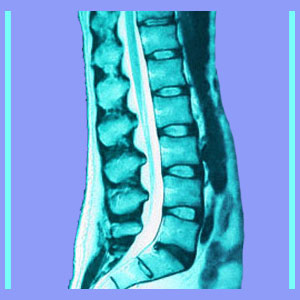
Spinal sciatica is the most often diagnosed category of conditions used to explain why patients may have chronic back and leg pain and related neurological symptoms. Spinal causations vary in severity and profile, but most are theorized to enact very similar symptoms in affected patients.
Additionally, patients who are diagnosed with spinal sources seldom find lasting sciatica pain relief, as these anatomical issues blamed for sourcing the suffering are sometimes not the actual culprits, leading to long and unsuccessful treatment journeys often ending in failed sciatica surgery.
This article will describe the various types of spinally-induced sciatic nerve symptoms. We will also provide evidence of why many diagnosed conditions turn out to be coincidental to the actual painful expression.
What is Spinal Sciatica?
Spinal causes of sciatica are issues in the backbone which are blamed for sourcing pain and the common sciatic nerve expressions, including weakness in the legs or feet, numbness in the legs or feet, tingling in the legs or feet and other less typical symptoms. Usually, the spinal issue will exist in the lumbar spine, or at the lumbosacral juncture, although some problematic occurrences virtually anywhere in the spinal column can lead to lower body pain, including sciatica.
Spinal structural issues are the leading diagnostic scapegoat for sciatica and are consistent with the almost exclusively Cartesian model of medical philosophy embraced by a rather unenlightened care system.
In many patient profiles, the suspected causes of pain do not demonstrate any pathological process and might have even been clearly shown not to produce any neurological interaction at all. Nevertheless, the spinal abnormality is still blamed for causing the pain. This is simply illogical.
Sciatica Causes in the Spine
There are so many different spinal sources blamed for enacting sciatica:
Herniated discs and degenerative disc disease are the most prevalent structural issues, since these are virtually universal in the lower back.
Osteoarthritis is another commonly implicated condition and once again, this degenerative process is almost always found in the lumbar and cervical regions to one degree or another.
Spinal curvature issues, such as scoliosis, hyperlordosis and hypolordosis are blamed for pain in some affected patients, as are vertebral misalignment issues like spondylolisthesis and retrolisthesis.
In less common cases, spinal tumors or other truly abnormal anatomical issues are cited as the logical source of pain.
Spinal Sciatica Guidance
Some patients definitely suffer from purely structurally-induced pain. In these cases, the true source of discomfort is rarely in doubt and treatment is likely to be effective in resolving the symptomatic complaint. However, we all know that this rarely occurs with sciatica. In fact, sciatica is known as a treatment-resistant health crisis and can last years, decades or an entire lifetime.
The reason for this is mostly due to misdiagnosis of the actual underlying causative process behind the pain. If the diagnosis is wrong, then treatment will fail. This is logical.
Unfortunately, regardless of the supposedly logic-based approach of medical science, some sciatica doctors seem to miss this crucial point, leading their patients on ridiculous quests for impossible to find cures for conditions which are not even causing their pain.




